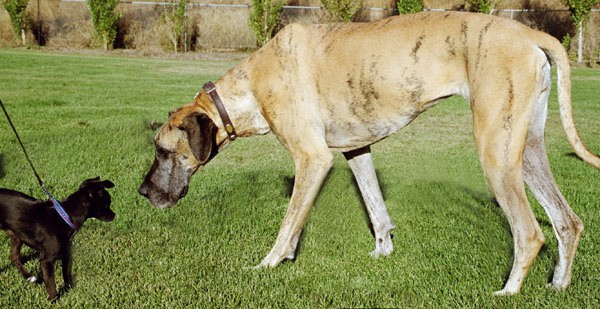Proper regulation of a diabetic dog involves pet owners monitoring and calculating sugar and insulin dosages twice a day at home. Consider learning how to make a glucose curve for your diabetic dog. This is very helpful and will provide you and your vet with valuable information. You can monitor sugar level trends and follow your pet’s sugar levels accurately and cost effectively.
To Make Your Pets Personal Sugar Curve:
Take a piece of notebook paper and write down the date each day. Place the dates vertically down the left side of the paper. Across the top of the paper, mark down the time of day, urine sugar reading, and the dose of insulin you have given every morning and every evening.
You can also add a box at the end of each day to mark down any important signs you noticed in your pet that day such as appetite, energy levels, attitude, water consumption, frequency of urinating, etc. Whenever you visit your vet bring your chart along and review it with your vet. Once you make your pet’s sugar curve chart, be sure to post it in a convenient place like your refrigerator door. This way everyone in your family will be on the same page when it comes to your pets insulin dosages.
How to Determine Proper Insulin Dosage:
To determine the proper insulin dosage, simply match the color of your dog’s urine to the numeric value on the Diastix strip. This is vital to try to minimize further internal organ damage and preserve what, if any, vision is left before cataracts occur. It is important to remember that your goal each day with the urine Diastix is a reading of “trace.” Each time you get a reading of “trace”, that means you are doing a great job and you just repeat the previous insulin dosage! If the Diastix reads minus 1, reduce the insulin dose by 1 unit. If the Diastix reads minus 2, decrease the dose by 2 units. If the Diastix reads plus 2, increase the insulin dose 2 units, if the reading is plus one, increase the insulin dose one unit. It is important to remember that you NEVER, ever increase or decrease the insulin dosage by more than 2 units.
It is always a good idea, to keep a jar of honey or karo syrup handy just in case your diabetic dog looks dazed or seems “wobbly” after you’ve given insulin. These are signs that the insulin dose was too high and as a result your pet’s blood sugar is too low. We call this hypoglycemia. If this occurs, rub a teaspoon of the honey or karo syrup directly into your pets gums. It is immediately absorbed through the gums and enters the blood, raising the blood sugar level almost instantly. Returning the blood sugar back to a normal level makes your pet feel much better and avoids a hypoglycemic or low blood sugar crisis.
Example of a Daily Routine:
The daily home routine for most diabetic pets is as follows: You wake up, take your pet outside and collect the first morning urine. Use the Diastix and get a urine sugar reading so you know what dose of insulin to give. Feed your pet 1/3 of his breakfast, give the proper amount of insulin, and then give your pet the remainder of his or her breakfast. Repeat the same procedure in the evening. If your pet does not eat the first part of his or her meal before it’s time for you to inject the insulin, this is a sign that something is wrong. If this happens, do not give any insulin, call your vet.
Dr. Carol’s Tip: Cut each urine test strip in half longitudinally, turning 50 Diastix into 100 and cutting your cost in half! We have enjoyed success in many of our diabetic canine patients using the above formula along with home-made organic diets and a natural, patented canine vitamin-supplement.
